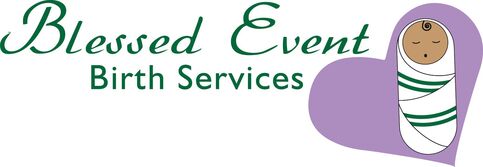The umbilical cord has one artery and two veins. The artery carries oxygen and nutrients to baby while the two veins carry waste products away from baby. The umbilical cord vessels are cushioned by Wharton's Jelly. This is the same substance found in eyeballs. Because of this substance, the cord is very resilient, being able to function even if baby is sitting on it, or has it wrapped around a hand or leg.
One thing I find fascinating is that the blood vessels that carry blood and waste products to and from the umbilical cord stop functioning after baby has transitioned to normal newborn circulation around 24-36 hours after birth. In the days and weeks after birth, the umbilical arteries becomes the medial umbilical ligaments and the umbilical vein becomes a ligament between the liver and the abdominal wall.
Sometimes at birth, the cord is wrapped around a shoulder or baby's neck. While it sounds scary to have the cord wrapped around the neck, it is important to remember that baby isn't breathing until after birth and the umbilical cord continues to carry oxygen to the baby. If the cord is wrapped, I simply unwrap it. I have seen cords that have a knot. It's not common. It can cause a problem if it gets pulled extremely tight, but most of the time that does not happen.
Fun facts about the umbilical cord:
- the length of the cord is close to how long baby is in many cases.
- 30% of babies have the cord wrapped somewhere on their body at birth.
- Most umbilical cords are twisted, similar to the way old school phone cords twist.
- Umbilical cords do not have nerves.
- The umbilical cord has no impact on whether your baby will have an "innie or outie" belly button.
- At birth, the umbilical cord is a blue/purple color and plump with blood which transfers to baby after birth, as a result the cord becomes thin and white.

 RSS Feed
RSS Feed